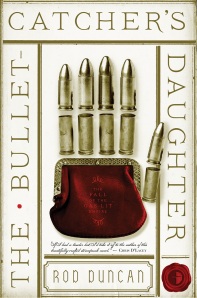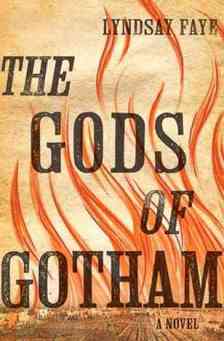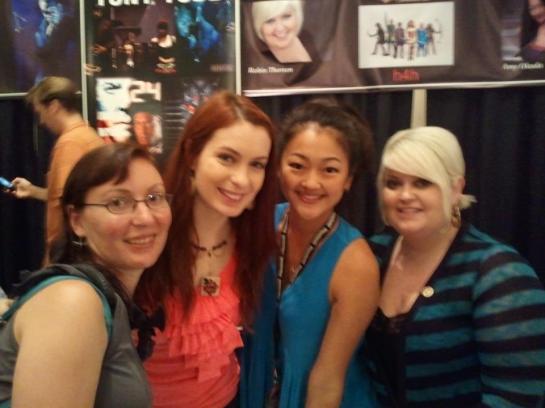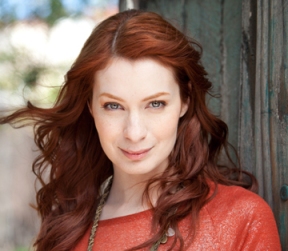 Before I begin the actual review of this book, I think I should begin with a short, unofficial history lesson on the origins of the term “steampunk.” I am brand spanking new as a reader of this genre, so this is what I’ve recently learned from conversations with others more well-versed in it than I am.From what I gather, the definition of “steampunk” within the publishing genre is still somewhat in flux, but here’s what Wikipedia (don’t flog me, my academic friends!) has to say about it:
Before I begin the actual review of this book, I think I should begin with a short, unofficial history lesson on the origins of the term “steampunk.” I am brand spanking new as a reader of this genre, so this is what I’ve recently learned from conversations with others more well-versed in it than I am.From what I gather, the definition of “steampunk” within the publishing genre is still somewhat in flux, but here’s what Wikipedia (don’t flog me, my academic friends!) has to say about it:
Steampunk is a sub-genre of science fiction that typically features steam-powered machinery, especially in a setting inspired by industrialized Western civilization during the 19th century. Steampunk works are often set in an alternative history of the 19th century’s British Victorian era or American “Wild West”, in a post-apocalyptic future during which steam power has regained mainstream use, or in a fantasy world that similarly employs steam power. Steampunk perhaps most recognisably features anachronistictechnologies or retro-futuristic inventions as people in the 19th century might have envisioned them, and is likewise rooted in the era’s perspective on fashion, culture, architectural style, and art. Such technology may include fictional machines like those found in the works of H. G. Wells and Jules Verne, or the modern authors Philip Pullman, Scott Westerfeld, Stephen Hunt and China Miéville.
Wikipedia also goes on to mention that Tor author K.W. Jeter coined the term in the late 1980s as a variant on the term “cyberpunk,” which is defined by Wikipedia thusly:
Cyberpunk is a subgenre of science fiction in a near-future setting. Noted for its focus on “high tech and low life,” it features advanced science, such as information technology and cybernetics, coupled with a degree of breakdown or radical change in the social order.
I think the most quintessential example of cyberpunk is the movie Blade Runner. So, my interest in the definition of “steampunk” came about as a result of a conversation I had with my friend Michael Underwood, author of the recently published novel, Shield and Crocus, wherein he suggests that “steampunk” must stay true to its roots and incorporate the “punk” aspect of cyberpunk. Mike says,
“To be ‘punk,’ there has to be an awareness of class, some degree of anti-authoritarianism, or anti-establishment sentiment, either in the heroes, or a critique of the system in the work itself. Most Steampunk is Victorian, and ‘punk,’ can delve into the industrial revolution, wage slavery, child labor, colonialism, etc. That’s where the punk comes from – the rejection of the tidy narrative about Victoriana that erases people at the margins and the thousands+ that slaved and died to create the majesty of the age.”
So, long story short, if we are including Mike’s definition of “punk” here (and we are because it just makes sense!), then I believe that Rod Duncan’s novel, The Bullet-Catcher’s Daughter (Angry Robot Books, August 2014), is a very good example of that definition. While the focus on steam technology is pretty light, the punk is definitely well-represented in the protagonist’s struggles with sexism and as well as in the extreme differences in freedom and expected adherence to the law that each social class experiences. These are just a few of the issues that plagued the protagonist as she tried to make a living and solve a mystery.
In this novel, Elizabeth Barnabus is a woman on her own in a world that resembles Victorian England, which is a part of The Gas-Lit Empire. As you can imagine, it’s practically impossible for Elizabeth to conduct any business, own any property, or hold a well-paying job as a single woman, so she solves this problem by masquerading as her own twin brother, a trick she learned from her father as a part of her act in a traveling circus. As a man, Elizabeth works at night as a private investigator of sorts. She’s hired to find the missing brother of an aristocratic woman, along the way, Elizabeth encounters some interesting steampunk technology as well as a legendary traveling circus run by a mysterious and possibly nefarious old man. The story moves along at a quick pace, and I found that I couldn’t put the book down for very long. This is my official introduction to the steampunk genre, and I really enjoyed it. I can’t wait to get my hands on more fiction like this, and I’m eagerly anticipating the sequel!





